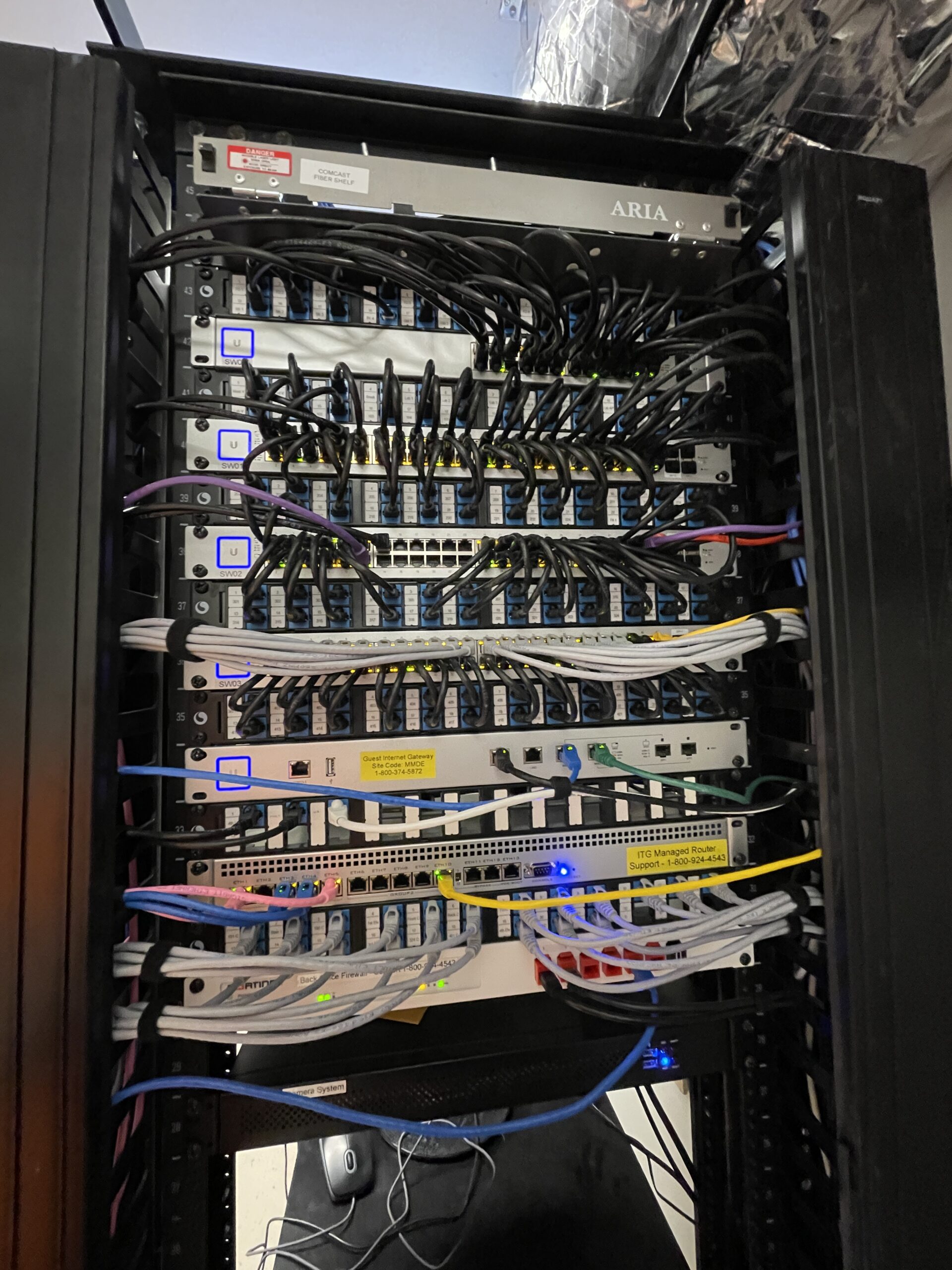A well-executed phone system installation is critical for ensuring smooth operations, especially in a business setting where communication is key. But how can you tell if the installation was truly top-notch? Here are some key indicators that your phone system installation was done right.
Table of Contents
1. Everything is Clearly Labeled
One of the hallmarks of a professional installation is clear and consistent labeling. Every piece of equipment, every cable, and every connection point to the telco should be labeled in a way that anyone can understand. Proper labeling ensures that future troubleshooting, maintenance, or upgrades can be done quickly and efficiently. Without clear labels, you or your service provider might spend unnecessary time figuring out what goes where, leading to potential disruptions in service.
Example: If you open your server rack and see neat labels on all equipment, such as “PBX Server,” “Switch 1,” “Data Line 1,” etc., you know the installer took the time to ensure everything is organized and easy to understand.
2. Color-Coded Power and Data Cables
A great installation will often go a step further by using color-coded cables for different functions. For instance, data cables might be blue, while power cables are red. This simple but effective method reduces the chance of confusion and mistakes when maintaining or expanding the system. It’s a visual guide that helps quickly differentiate between different types of connections, which is invaluable in larger, more complex setups.
Example: When looking at your setup, if you notice that all power cables are colored, it’s a sign that the installer focused on organization for your system.

3. Equipment is Properly Bonded and Grounded
Bonding and grounding are critical safety and performance measures that should never be overlooked. Bonding involves connecting all metallic parts of the installation to ensure there is no difference in electrical potential between them, which can prevent electrical shocks and interference. Grounding ensures that any excess electricity, such as a surge or static charge, has a safe path to dissipate, protecting your equipment and reducing the risk of damage.
Example: If you see that all the equipment is securely bonded and grounded, with grounding cables connected to an appropriate earth ground, it shows the installer prioritized both safety and system longevity.
4. Contact Information is Clearly Provided
A great installer will not leave you in the dark after the job is done. They will ensure that you have easy access to their contact information, should any issues arise or if you need further assistance. This might include leaving a contact sheet near the equipment, providing a digital copy via email, or even installing a sticker with contact details on the main equipment.
Example: If you can easily find the installer’s contact details on the equipment or in the documentation provided, it’s a sign they are confident in their work and ready to support you if needed.
5. Training is Provided
The best installations don’t just end with the hardware setup. A great installer will take the time to provide training on how to use the new system. This could involve a walkthrough of the system’s basic functions, answering any questions, and ensuring that key personnel know how to handle routine operations and troubleshooting. Proper training minimizes the chances of user errors and ensures that you can take full advantage of the new system’s features.
Example: If, after the installation, you or your team received a clear and comprehensive training session, with an opportunity to ask questions and understand the system, you can be confident that the installer went above and beyond.

6. Comprehensive Documentation is Provided
Another key sign of a great installation is thorough documentation. This should include a system map, details of all the equipment used, user manuals, and any specific configurations that were implemented. Good documentation allows anyone working with the system in the future to understand its design and make informed decisions without needing to reverse-engineer what was done.
Example: If you were handed a packet or digital file with all the information you might need in the future, your installer clearly took the time to ensure you have everything necessary to maintain and operate your system.
7. A Clean, Organized Installation Area
After the installation is complete, the work area should be left clean and organized. Excess cables should be trimmed and secured, and any packaging or debris should be removed. A clean installation not only looks professional but also prevents any potential safety hazards or equipment issues.
Example: If the area around your phone system looks neat, with no stray cables or clutter, and everything is securely mounted and positioned, you can be sure that the installer took pride in their work.
8. Post-Installation Support is Discussed
The best installers will also talk with you about post-installation support. They might offer a maintenance plan, discuss what to do if issues arise, or set up a follow-up appointment to ensure everything is working as expected. This proactive approach shows that the installer is committed to your satisfaction and the long-term success of your system.
Example: If your installer has already scheduled a check-up or has outlined a clear path for ongoing support, it’s a sign of a professional and customer-focused approach.
Conclusion
A great phone system installation isn’t just about plugging in a few cables and turning on the equipment. It’s about attention to detail, organization, safety, and ensuring that you, the customer, are fully prepared to use and maintain the system. If your installation meets all of the above criteria, you can rest assured that you’ve received a top-tier service that will serve your needs well into the future.


Comments
One response to “How to Tell You Had a Great Phone System Installation”
[…] Phone Lines. Finally, ensure that your phone system installation meets top standards by reviewing How to Tell You Had a Great Phone System Installation, which covers key indicators of a successful […]